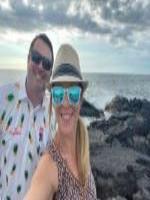



Purpose and Objective
Our goal is to demonstrate that high quality immersive learning will transform the way teachers teach science, boosting student engagement, collaboration and learning. Our immersive approach to education allows students to experience science knowledge and concepts in ways not possible in the real world. Nano:Cell embeds the elegant mechanisms of protein synthesis in a story about saving the world from a viral pandemic.
Technology Intervention
Nano is a full NGSS-based unit on biology’s central dogma, primarily experienced through a game-powered VR simulation of cell biology and protein synthesis, and supported by a real-time networked partnering experience that allows a web partner to help the VR partner succeed in the cell simulation. See this video for an example of our work --https://youtu.be/lycdz4fc2xM
Evidence of Success
Lighthaus has been awarded major research grants from both the U.S. Department of Education and the National Institutes of Health, and has run the largest-ever research studies of VR-powered STEM learning, with thousands of students across dozens of classrooms.
In the spring of 2022, a study with 710 students across 15 biology classes demonstrated that students' science confidence increases when Nano is incorporated into the science instruction in comparison to the students that learned using the traditional science teaching approach. Teachers reported that students that learned using Nano were highly engaged in VR, and this engagement persisted even after the initial novelty of VR wore off. In addition, the teacher reported that Nano was especially helpful with enhancing the “hands on” aspects of learning, allowing students to see concrete examples of scientific concepts that they would not normally have the chance to see. A similar study will be conducted in Fall of 2023 and, if selected, the outcome from this study will be included in our ISTE presentation.
Curriculum
Nano‘s NGSS-aligned curriculum is designed to be completed in groups of two. Students take turns going into VR and going online to complete a series of missions. Each mission scaffolds learning concepts, and builds upon the knowledge acquired in the previous. Effective communication and collaboration between the two roles is essential in order to complete missions within Nano.
In this student-centered, self-paced learning environment, the teacher’s role is to frequently check-in with student groups and offer just-in-time instruction to ensure students are learning the intended science concepts. For each stage of Nano, teachers are provided a list of learning objectives, check for understanding questions and academic vocabulary as a tool to assess learning and initiate the small group instruction.
The final mission of Nano requires students to draw upon all of the knowledge and skills they acquired in the previous missions to design a gene that will code for a new antibody. Once designed, students will explain to the Nano genetic engineers how this gene can be used to produce an antibody perfectly shaped to fight the invading virus (HS-LS-1). Inside the virtual cell, students will use their gene designs to synthesize a new antibody and fight off (and hopefully defeat) the virus infecting the cell.
5 mins - Introductions of presenters
David Sarno - Founder & CEO of Lighthaus
Cara Johnson - Head Learning Designer
Emily O’Neill - Creative Director
5 min - Padlet for Questions
During our presentation, attendees will be encouraged to post questions on a Padlet. One of the presenters will continuously monitor the posts on the Padlet board, and, when possible, provide an answer as a comment. Time will be dedicated at the end of the presentation to answer the questions that require a more in-depth response.
5 mins - How VR will transform education.
We’ll start with a presentation of how VR works in the classroom, why it’s already a hit in early adopting classrooms, and how teachers can set up immersive learning programs.
15 mins - What differentiates Nano from the rest
Through a series of short video clips, we will demonstrate how Nano has all the elements of a high quality, standards-based learning experience, outlined by the Brookings Institute policy brief “A whole new world: Education meets the metaverse.”
10 mins - Our research
We’ll describe our randomized control study conducted in spring and fall of 2022 with thirty-two Biology teachers. We examined the impact of using Nano VR within an authentic educational setting. We will provide the attendees an overview of the outcomes from these studies such as a statistically significant increase in engagement and science confidence.
10 mins - Successful Implementation of VR
We will end our presentation with some strategies we’ve used for successful implementation and classroom management of VR within the classroom.
10 mins - Answer Questions
Time at the end of the presentation will be saved to review unanswered questions on the Padlet, and an invitation for teachers to demo the experience
Improving High School Students' Knowledge of Heredity and Genetics Through a Virtual Reality–Enhanced Science Investigation, WestEd, AERA 2021, Andrew Grillo-Hill, Michelle Tiu, David Sarno, Rosanne Luu, Charlie Mahoney, Karen Melchior, and Marina Varfolomeeva, https://aera21-aera.ipostersessions.com/Default.aspx?s=7E-CF-C0-3C-E1-F5-6E-07-20-22-AB-2A-FA-0A-3A-6F
Hirsh-Pasek, Kathy, et al. “A Whole New World: Education Meets the Metaverse.” Brookings Institution, 14 Feb. 2022, https://www.brookings.edu/research/a-whole-new-world-education-meets-the-metaverse/.